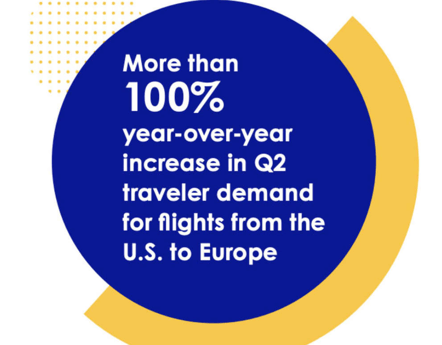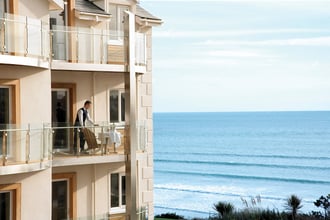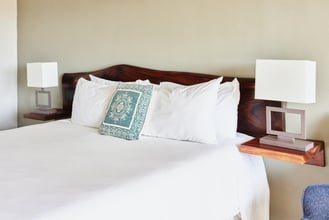Back in August time last year, data from Expedia Group showed an increase of 40% in stayed room nights and a 9% increase in stayed average daily rates (ADRs) quarter-over-quarter.
According to Expedia, the strong demand for travel and hotels was only set to continue, with long-haul destinations making their comeback.

Fast forward to now, and the data is still promising.
According to new findings from Hotstats and RSM UK, the performance of the UK hotels sector was better than expected in February and is outperforming the rest of the hospitality sector.
The data shows average daily rates (ADR) of occupied rooms increased from £121.74 (January) to £128.94 (February) in the UK and from £185.43 to £196.26 in the London market.
This is a 13% increase for both UK and London hotels when compared to the same month last year and incredibly, it beats the underlying rate of inflation of 10.4%.
And it's not just the UK - it's happening Stateside too. While US inbound and outbound tourism isn’t back to pre-Covid levels just yet, there are still impressive and promising results to be seen.
Nearly 51 million people visited the U.S. last year (a 128% increase from 2021).
Given the fact that international travel hasn't returned to 2019 levels yet means hotel rates will just keep increasing as occupancy rates become higher. In December, the US saw the level of international visitors sitting at roughly 75% of pre-pandemic levels (which was well before peak summer travel season).
So... how should you go about setting your room rates?
Keep a consistent, steady eye on your performance
Start your day by checking your occupancy, revenue, average room rate (ARR) and no-shows. As well as this immediate and most recent data check-in, consistently compare your performance with the previous year. Your PMS should provide you with solid data that will help to inform your pricing decisions.
Keep an eye on your competitors
Consistently looking closely at how your competitors are selling their rooms will give you a great indication of what your customers are willing to pay. Note their rates, when they are increasing or decreasing, and how regularly they offer discounts. It's a very useful starting point for your own pricing strategy.
Remember who you're selling rooms to
Don't lose sight of your customer segments when you are pricing rooms. It's very important your pricing strategy aligns with your various customer bases - and they may have different behaviors depending on what persona group they belong to. Let this help to guide you.
Having a rate parity strategy in place
While of course OTAs have their place as part of your revenue strategy, be careful that you are always offering the lowest and best price yourself so customers are encouraged to book direct.
Book a demo to find out more about Net Affinity's technologically advanced booking engine
To help ensure this, always make sure your PMS sends updated and correct rates to the relevant distribution channels.







